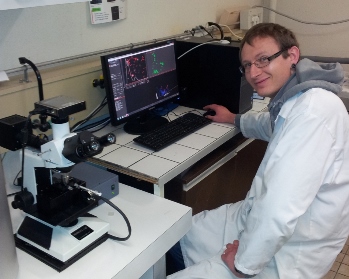May 28 2013
NanoSight reports on how Nanoparticle Tracking Analysis, NTA, is being used in the research project "Engineering of Biomolecules" at the Lorraine University, based in Nancy.
Dr Jordane Jasniewski works at the Laboratory of Biomolecules Engineering (LIBio) at Lorraine University, Nancy, and teaches in Food Chemistry at ENSAIA, an engineering school.
He is a member of the research team working on the engineering of biomolecules to understand their structure and function to help develop new molecular architectures, to be applied in the areas of foods & agrichemicals, nutrition, pharmacology and cosmetics.
The expertise of LIBio allows the study of stabilization, functionalization and targeting of active molecules such as probiotics, antibacterial peptides, phenolic antioxidants and polyunsaturated fatty acids (PUFAs). Based on vectors of extremely rich marine DHA (docosahexaenoic acid, an omega-3 fatty acid), new dairy matrices, phospholipids and biopolymers are being developed.
Dr Jasniewski described the reasons for his selection of NTA for the measurement of the hydrodynamic diameter, Dh, of his nano-emulsion samples: "Our samples, which include polysaccharides, milk proteins and lecithins, are polydisperse.
 Dr Jordane Jasniewski of Lorraine University with the NanoSight NTA system.
Dr Jordane Jasniewski of Lorraine University with the NanoSight NTA system.
Having used dynamic light scattering, DLS, without success, we decided on NTA as it makes measurements on a particle-by-particle basis and does not need the refractive index to determine Dh. We can also readily measure the concentration of our samples and data is produced in a convenient way to export and use for further study."
To find out about the company and to learn more about particle characterization using NanoSight's unique Nanoparticle Tracking Analysis solutions, visit www.nanosight.com and register to receive the next issue of NanoTrail, the company's electronic newsletter.
For a high resolution copy of the image, either right click to download or contact Jezz Leckenby at Talking Science.
About NanoSight
NanoSight delivers the world's most versatile and proven multi-parameter nanoparticle analysis in a single instrument. NanoSight's "Nanoparticle Tracking Analysis" (NTA) detects and visualizes populations of nanoparticles in liquids down to 10 nm, dependent on material, and measures the size of each particle from direct observations of diffusion.
Additionally, NanoSight measures concentration and a fluorescence mode differentiates suitably-labelled particles within complex background suspensions. Zeta potential measurements are similarly particle-specific.
It is this particle-by-particle methodology that takes NTA beyond traditional light scattering and other ensemble techniques in providing high-resolution particle size distributions and validates data with information-rich video files of the particles moving under Brownian motion.
This simultaneous multiparameter characterization matches the demands of complex biological systems, hence its wide application in development of drug delivery systems, of viral vaccines, and in nanotoxicology.
This real-time data gives insight into the kinetics of protein aggregation and other time-dependent phenomena in a qualitative and quantitative manner. NanoSight has a growing role in biodiagnostics, being proven in detection and speciation of nanovesicles (exosomes) and microvesicles.
NanoSight has installed more than 600 systems worldwide with users including BASF, GlaxoSmithKline, Merck, Novartis, Pfizer, Proctor and Gamble, Roche and Unilever together with the most eminent universities and research institutes. NanoSight's technology is validated by 800+ third party papers citing NanoSight results.
NanoSight's leadership position in nanoparticle characterization is consolidated further with publication of an ASTM International standard, ASTM E2834, which describes the NTA methodology for detection and analysis of nanoparticles. For more information, visit www.nanosight.com.